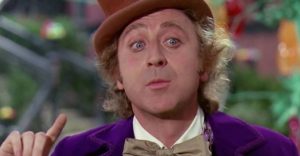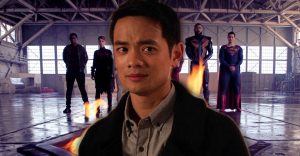Why She-Hulk Is So Different To The MCU’s Original Hulk

With Jennifer Walters making her MCU debut in the upcoming Disney+ series, She-Hulk, those less familiar with Marvel Comics may wonder why she’s so different from the MCU’s original Hulk. While Walters’ powers and origin are extremely similar to that of Bruce Banner’s, She-Hulk is a markedly different character whose stories tend to have a drastically different tone from Banner’s, allowing her to become a fan-favorite superhero in her own right. The MCU version of She-Hulk appears to be adhering closely to Walters’ classic origin, which will provide a sufficient explanation for why she’s so different from Bruce Banner’s Hulk.
Bruce Banner’s transformations and traits as The Hulk have changed over time, though the only consistent detail is his exposure to gamma radiation. Following his 1962 debut in The Incredible Hulk comic series, Banner would find himself turning into the green behemoth (though he was originally depicted as gray) based on moonlight or additional bursts of radiation. The classic 1970s TV show of the same name gave Banner his best-known transformation condition: anger. The MCU version of The Hulk adapted this and the TV version of Banner’s gamma-ray exposure in 2008’s The Incredible Hulk.
Debuting in the 1980 comic series, The Savage She-Hulk, Jennifer Walters obtained her powers when a gunshot wound left her in mortal need of a blood transfusion, which her cousin, Bruce Banner, provided (as the only available doner). Banner’s gamma-irradiated blood gave Walters a limited degree of The Hulk’s powers. While not as strong as her cousin’s alter ego, Walters could transform to and from her She-Hulk form at will, and she retained her mind in whatever state she’s in, arguably making her powers far more convenient and useful than the original Hulk’s, even with reduced strength.

Bruce Banner often struggles with his two forms. In his early years, Banner loathed his Hulk identity, seeking to find a way to cure himself of his condition and return to a normal life. 2012’s The Avengers gave Banner significant character development, however, as he learned how to make The Hulk a benevolent force by controlling his transformation. Still, an accidental incident would lead Hulk to destroy indiscriminately, as shown in the film’s second act, and The Hulk could still be a malevolent force if Banner’s mind is tampered with, as shown in Avengers: Age of Ultron.
Jennifer Walters has no such issues as She-Hulk since she never developed a destructive second personality upon receiving her powers. As She-Hulk, Walters is simply a larger and green version of herself, so she doesn’t struggle with duality and the destructive nature of her strength quite the same way that Banner does. She-Hulk’s comics gradually took the tone of action-comedy, rather than the action-drama of Bruce Banner’s Hulk stories. The less dour tone of Walters’ adventures, such as John Byrne’s Sensational She-Hulk comics, fit quite well with the MCU’s often lighthearted films and TV shows.
Avengers: Endgame provided a preview of sorts for what to expect in She-Hulk. In the years following Thanos’ snap, Bruce and The Hulk melded, creating “Smart Hulk” who has the mind of Banner and the body of The Hulk. While seemingly unable to transform at will, Smart Hulk’s combination of brains, restraint, and super strength is remarkably similar to Jennifer Walters upon transforming into her green alter ego, demonstrating the difference between She-Hulk and Banner’s original Hulk form.
- Doctor Strange in the Multiverse of Madness (2022)Release date: May 06, 2022
- Thor: Love and Thunder (2022)Release date: Jul 08, 2022
- Black Panther: Wakanda Forever/Black Panther 2 (2022)Release date: Nov 11, 2022
- The Marvels/Captain Marvel 2 (2023)Release date: Feb 17, 2023
- Guardians of the Galaxy Vol. 3 (2023)Release date: May 05, 2023
- Ant-Man and the Wasp: Quantumania (2023)Release date: Jul 28, 2023
About The Author

















